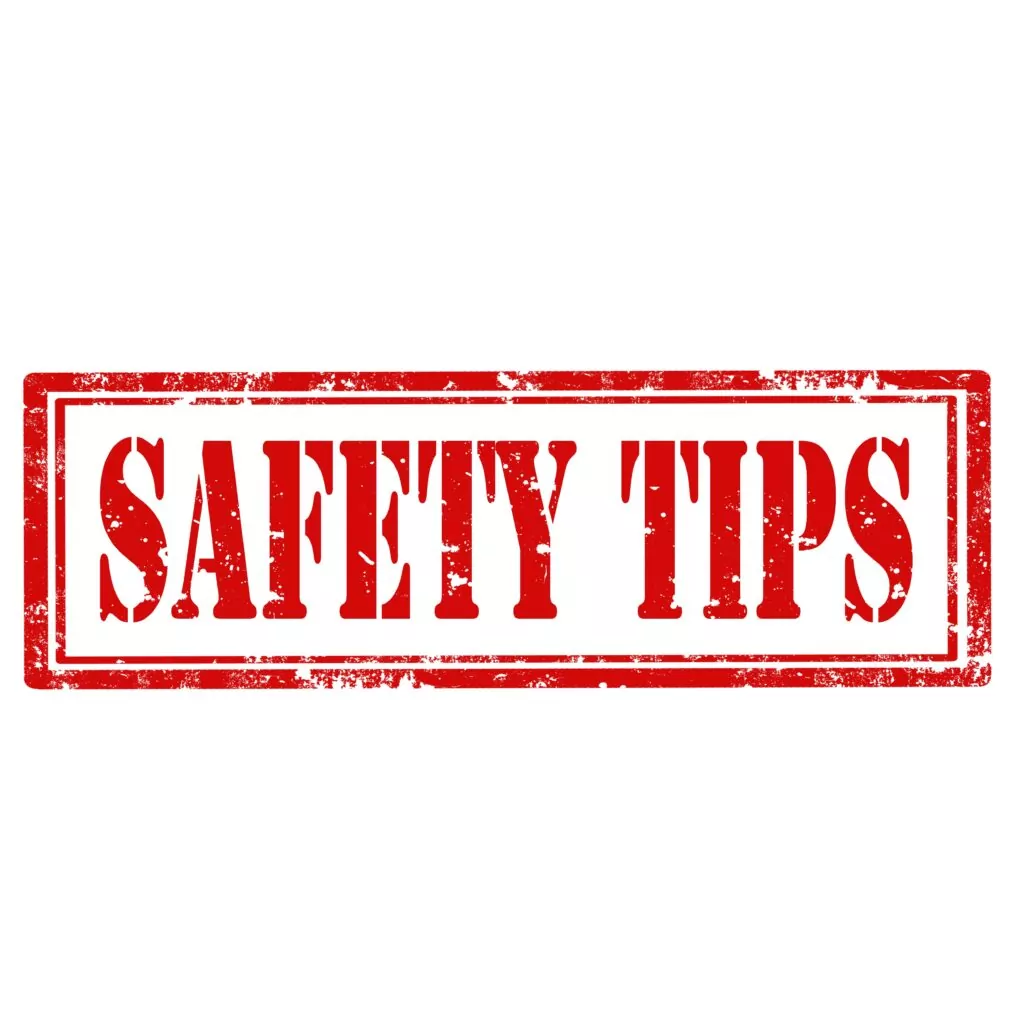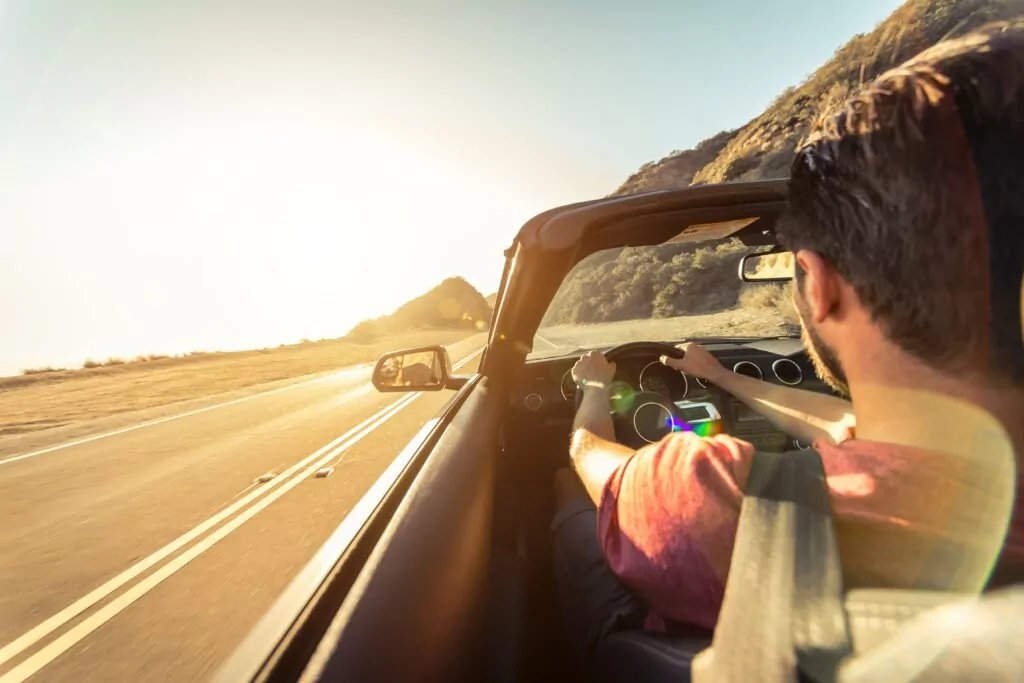
Safety tips for driving are some of the most crucial readings a person can do, and they are mandatory to know when you are a new driver.
When you’re traveling along a seaside roadway in California, driving may be a real pleasure. It’s also aggravating if you’re stuck in one of the world’s most notorious traffic congestion, such as in Los Angeles or San Diego. It’s always crucial to take note of driving guidelines and restrictions no matter where you are driving in this large state.
California has among of the biggest freeways in the country, which indicates a considerable number of automobile accidents and accompanying injuries occur nearly every day. If you’re one of those motorists on state highways, you should take precautions to reduce your chances of being involved in a crash. Here are a few things to keep in mind for your long drives.
To begin, it is critical to maintaining a laser-like focus.
Drivers who are focused help to avoid car accidents. These drivers are attentive, observant, and unaffected by distractions. All drivers in California must adhere to the regulations of the highway while remaining alert. To be a cautious driver and to keep the roads secure, follow these guidelines. Be vigilant, awake, and conscious at all times.
When you are getting ready to drive, you must make sure they are alert and awake. If you feel sleepy and tired and need to urgently drive somewhere, make sure you manage to keep yourself alert by drinking coffee or playing music. sometimes music can be distracting too, so make sound judgments. To get behind the wheel responsibly, you must be aware of your surroundings. Motorists must be mindful and keep their attention on the road ahead of them.
Do not drive while preoccupied
Any activity or behavior that diverts your focus away from driving is considered distracted driving. Distracted driving can be visual, tactile, or cerebral, according to the Centers for Disease Control (CDC):
- Any action that diverts your attention away from the road is considered visual.
- Any activity that requires you to take your hands off the steering wheel is a tactile or manual distraction.
- Anything that diverts your attention away from driving, like emotions, intrusive thoughts, etc. are cerebral or cognitive distractions.
Many behaviors can be classified as distracting in more than one way. Texting while driving puts your life and the lives of other drivers in danger. It is extremely risky since it includes all visual, tactile, and cerebral distractions. Here are some more examples of inattentive driving:
- When you’re on the phone or with your passengers,
- Making use of your GPS manually
- Taking a meal while driving
- Adjusting the volume on the radio
- Using social media applications
- Daydreaming
- Maintain your concentration on the road. In a couple of seconds, deadly dangers can appear.
Before You Get Behind the Wheel
- Are you well-rested, attentive, and comfortable in your ability to reach your location?
- Plan your travels. Consider whether you can do your task without driving at all. Is it possible to minimize wasteful driving by using a phone conversation, an email, or an online meeting? Is it possible to lower your risks by taking public transportation?
- Public cabs and ride services are two ways to reduce the amount of time you spend driving.
- If you must drive, plan ahead of time. There are some useful online tools out there to help you prepare for your trip, even if it’s only a short one.
- Create a trip itinerary – Look over the routes you expect to take and prepare an alternate route in case something goes wrong. Keep an eye on the traffic, harsh weather, and road conditions. Sometimes even having bad weather can throw things off. If you are someone easily blinded by the sun while driving, make sure you are carrying a pair of sunglasses in your car. Set up a check-in proof and inform your boss about your plans.
- Set up your car as per your comfort – Have you adjusted the seat, rear view mirrors, and headrest to your liking? Perform a pre-trip check to ensure all is in functioning order. Is there any maintenance that needs to be done? Talk to your mechanic if you don’t think the car is up to the task. Do not take broken cars out for long drives.
You must be observant on behalf of everyone on the road because they may not be watching the road. Being a careful driver who can assess potentially harmful scenarios and traffic conditions is critical. Drivers can assist prevent car accidents by being aggressively vigilant and concentrating on the road.

Defensive driving should be mastered.
Keep a close eye on your environment. This involves being mindful of other drivers in your immediate vicinity. A few defensive driving tips are as follows:
Keep a safe gap between you and the vehicle in front of you. Tailgating or driving too closely is not a good idea. Make sure there is enough space between you and the automobile in front of you (or even behind you if possible). You ought to be able to break rapidly without causing accidents. If the weather is cloudy, give yourself much more room because stopping will take longer on wet roads. Many tires of old cars have been worn out and not replaced. This can lead to smoothening of the tires, causing even more issues in braking.
Keep an eye out for blind areas. Keep your distance from other vehicles’ blind spots. When changing lanes, several drivers don’t check their blind spots, so avoid putting yourself in that situation. Freight cars have bigger blind areas than passenger cars, so bear that in mind.
During the brief fall days, be prepared for the change in light patterns.
The days are typically shorter in the fall. At dawn and dusk, the sun moves closer to the horizon, increasing glare. When Daylight Savings Time ends on November 7, the evenings will become darker sooner. As per the National Safety Council, “although we only do a fraction of our driving at night, 50 percent of traffic deaths occur at dark.” This is due to the fact that in the darkness, depth perception, the field of vision, and image identification are all impaired.
- Maintain a clean windshield to prevent glare from being exacerbated by dirt stains.
- Driving around communities at twilight or dawn requires extra caution. It can be difficult to spot kids frolicking or adults walking their pets in low light.
- The glare of oncoming headlights can be overwhelming when driving at night. But sunglasses should not be used at night since they can obscure your view. The greatest method is to resist staring straight into oncoming traffic’s headlights. Looking to the right, check for the simple white road line painted on the concrete.
A few tips if you are planning a long trip across the state
- Allowing youngsters to squabble or crawl around in your car is not a good idea; they should always be strapped in. A lot of noise might easily divert your attention away from the road, so make sure there is no ruckus in the back.
- When switching lanes, always be cautious. Getting in front of someone, changing lanes too quickly, or failing to utilize your indicators might result in an accident or lead other drivers to become irritated.
- When you’re fatigued, don’t drive. Be warned that certain drugs cause dizziness, which makes driving a car extremely unsafe. Read more about the dangers of micro sleep and driving during it. Make sure you consult your doctor about your medicines before you undertake a long ride.
- Around deer season, drive with extreme caution.
Stay within the speed limit
When the neighboring drivers are going considerably over the legal speed, it can be enticing to speed up too. Keeping to the speed limit, on the other hand, can assist you to prevent a collision, particularly if there is an unexpected danger on the road.
The longer it takes to come to a complete halt, the quicker you are driving. In addition, if you are injured in a car accident while driving too fast, your damages are likely to be more serious- both monetary and health-wise.
Keep an eye out for seasonal changes that may necessitate you to drive slower than the posted speed limit, such as mist, fog, or strong winds.
Keep to the Right
Unless overtaking another car, drivers must stay in the far right lane on the motorway. You must also stay to the right if you are not overtaking another car that is moving more slowly.
Return to the middle or right lane once you’ve passed the car. While vehicles are approaching the route from an on-ramp, you could be able to maneuver into the center lane.
Be Careful When Turning and Passing Other Vehicles
As mentioned above, in California, you can only overtake on the right side of an open roadway if there are at least two lanes of traffic traveling in your way. If the driver in front of you is signaling a left turn, you understandably cannot pass on the left.
When two cars are on a roadway and neither can cross, the car on the downhill side must relinquish the right of way. The downhill car must back up until the car on the uphill side can cross.
One can only turn left on a red light if they’re on a one-way road that connects to some other one-way road. Also, you can only take a right on a red signal when there are no indications clearly preventing it.

When Can You Make U-Turns?
There are only a few circumstances in California where you can make a U-Turn. There has to be
- a double yellow line,
- no signs explicitly prohibiting U-Turns,
- no vehicles approaching you from within two hundred feet if you are in a residential area,
- and a gap-way in the center divider if you are on a divided highway.
Keeping Your Pet Safe
A correctly fitted seat belt will allow the dog to breathe and sit peacefully while restricting the dog’s mobility to keep him from being flung around or even out of the car. An uncontrolled dog in the backseat might rapidly become a threat as the physics of a car crash swiftly takes over. It can convert your best buddy into a missile with the possibility of causing head, jaw, or back injury.
The impact of your dog colliding with you, other passengers, or the adjacent seats may easily be fatal. And at the speeds that we drive vehicles, you have no means of reacting quickly enough in the middle of a crash.
Furthermore, if your pet is catapulted from the car and survives, they are now at the risk of being knocked over or run over by nearby vehicles. They might even get incredibly anxious as they try to maneuver the perilous and frightening road full of motor vehicle traffic and blinding headlights. When it comes down to it, it’s entirely your obligation to secure your dog (or any other pet). It’s vital for both your and your pet’s protection.
When driving in bad weather, avoid utilizing cruise control
Although cruise control is a useful feature in a car, it should not be used in chilly, rainy, or icy weather. When a car moves at the same speed in the snow or rain for an extended length of time, fluid retention builds up on the tires. This makes it easier for the car to hydroplane or the motorist to lose control of the car. In the rain or snow, proceed gently and change speeds to prevent water accumulation on the tires.
New safety ideas for an old car
Safety mechanisms geared at correcting errors or warning the driver of risks on the highway are flooding the market. Several of the technologies employed to maintain the car inside its own lane or identify other nearby objects can also be used to assist drivers. These help drivers exercise safer driving skills as driverless cars become more common. Many older automobiles, on the other hand, lack these life-saving elements, causing many motorists to choose between their security and investing their funds in a modern, safer vehicle. Luckily, because additional third-party safety kits are available, those decisions can be made with much less financial stress.
When entering bends or curves, take it slowly
When visibility is reduced, depth perception suffers as well. Easing down at the start of each curve allows you extra time to respond to objects that are closer than you think. This also offers you a chance to react to individuals or objects that your headlights have revealed. Your headlights, for instance, are aimed straight ahead at the onset of the curve, but the lane curves outward from the light’s focal point.
Get your eyes checked on a regular basis
This piece of advice isn’t exclusive to just nighttime driving, but it can vastly improve your evening experience of driving. Straining your eyes at night might cause vision issues and make it more difficult to travel at night. Regular eye checkups can help you avoid a variety of diseases from developing and causing havoc on your health, or putting you in danger on roads.
Stack your car with the essentials
Keep a first-aid kit available in case you or another road user are involved in an accident. In an event where you need to call 911 or get emergency assistance by parking on the roadside. Carry a road flare, torch with two new batteries, jumper cables, water supplies, and a power adapter in your car.
Dim the dashboard lights of your vehicle
Several dashboard LEDs and huge infotainment displays in current automobiles generate light that can be a source of unwanted distraction as well as obstruct your eyesight. Darkening the dashboard lights reduces the amount of reflected light off the windshield, leading to better visibility at night.
What to do in case of compromised visibility?
- If you’re on a narrow mountain road, you should drive as far to the right side as possible and blast your horn. Do this especially if you can’t see much more than 200 feet ahead of you.
- 30 minutes after sundown and until 30 minutes before daybreak, you must always use your headlights.
- When operating your windscreen wipers due to weather, always switch on your low-beam headlamps.
- If you’re traveling on a two-lane highway outside of town, make sure to switch your high beam headlights to low beams when you notice an approaching car.
When merging, go faster
While merging onto the highway from a side-road, keep your speed near to that of the highway you’re merging into. This procedure avoids vehicles currently on that stretch of road from needing to abruptly change lanes or slow down, potentially resulting in a serious accident.
Consult a Seasoned California Car Accident Lawyer
Unfortunately, you can’t influence anyone around you, therefore you can end up in an accident on one of California’s interstates, no matter how cautious you are. According to state law, wounded plaintiffs can seek compensation from the at-fault parties for their losses. This could include the expense of recovery-related medical care, lost wages, and mental anguish.
Whether you and a loved one have been injured, or your vehicle has been damaged as a result of a collision, you should get legal advice from a qualified car accident attorney.


Comments are closed, but trackbacks and pingbacks are open.